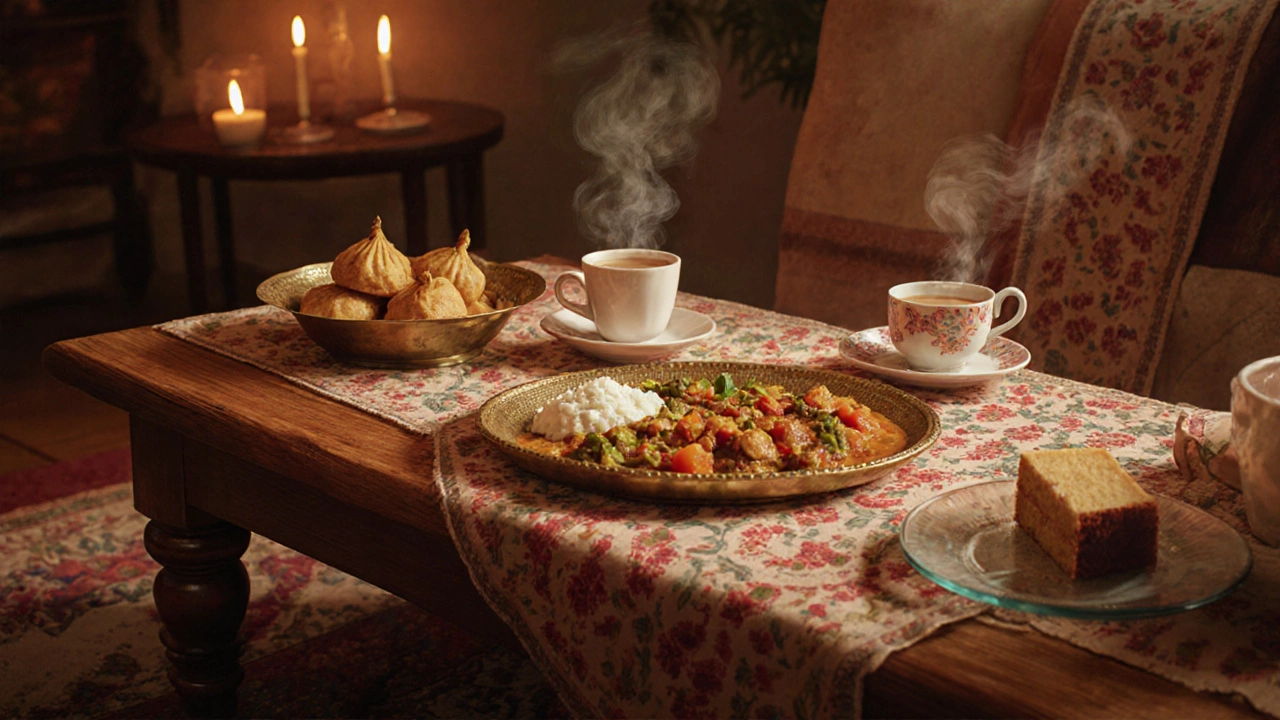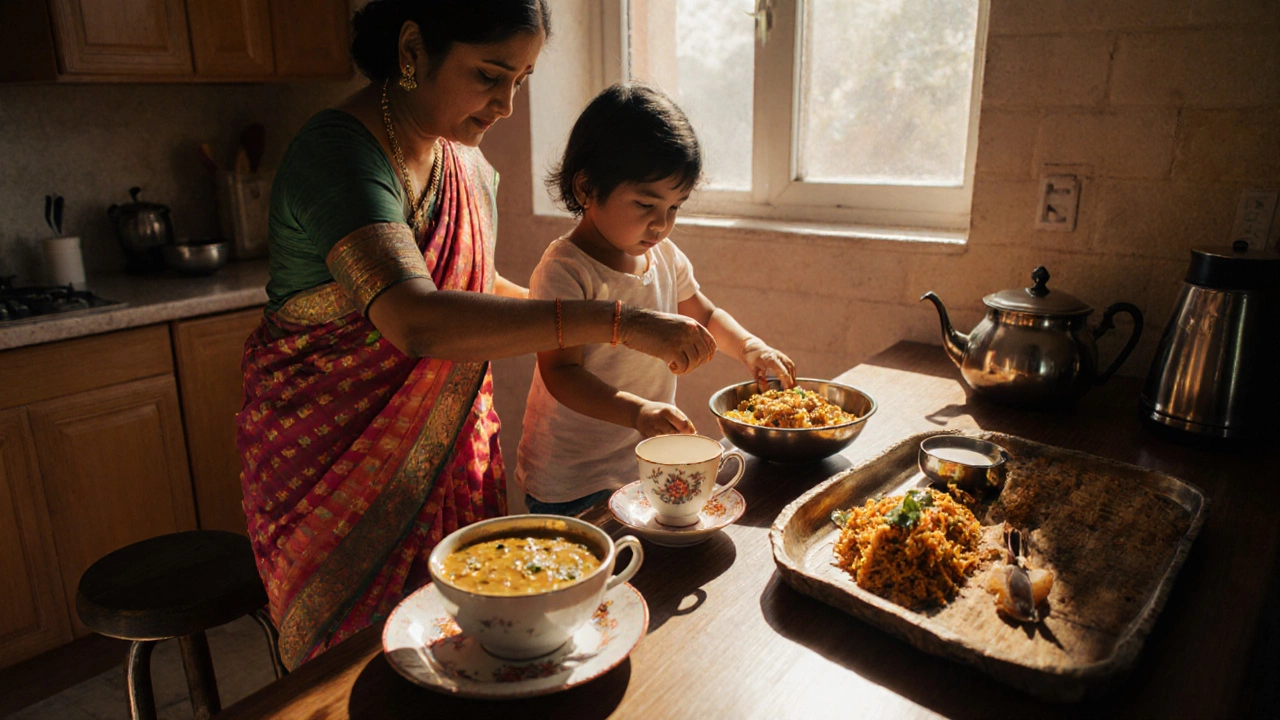Kitchenware Identifier
Enter details about your kitchenware item to find the correct term:
Did you know that the word “dish” can refer to a tiny espresso cup, a massive serving platter, or anything in between? If you’ve ever wondered which word really fits the piece of crockery you’re holding, you’re not alone. In this guide we’ll clear up the confusion and give you the exact terminology you need for every type of kitchenware.
- Learn the precise definition of “dish” and why it’s often too vague.
- Discover the correct names for plates, bowls, cups, saucers, platters and more.
- See a side‑by‑side comparison of British and American naming conventions.
- Get practical tips for choosing the right word in writing, labeling, and conversation.
- Find a quick‑reference checklist you can keep on the back of the pantry door.
What Exactly Is a “Dish”?
When you talk about Dish is a generic term for any container used to hold food for serving or eating, the word can be vague. In everyday speech it covers everything from a porcelain soup bowl to a metal serving tray. The problem? Using “dish” when a more specific term exists can make your description feel sloppy or, in a catalogue, cause customers to buy the wrong item.
Core Kitchenware and Their Proper Names
Below is a rundown of the most common pieces you’ll find in a kitchen, each introduced with its own microdata definition.
Plate: Plate is a flat, typically round container used for serving or eating solid foods. Most dinner settings start with a dinner plate (about 10‑12 inches in diameter) and a smaller salad or dessert plate.
Bowl: Bowl is a deep, curved vessel designed for liquids or loose foods such as soup, cereal, or salad. Bowls range from tiny ramekins (2‑3 inches) to large serving bowls (up to 20 inches across).
Cup: Cup is a small handheld container for hot or cold beverages, typically holding 6‑12oz. Cups may come with a handle (mug) or without (espresso cup).
Saucer: Saucer is a flat, shallow dish that accompanies a cup, providing a place for spills and a surface for a tea bag. Saucer diameters are usually 1‑2inches larger than the cup they support.
Platter: Platter is a large, often rectangular or oval serving surface used for arranging multiple pieces of food. A dinner platter can be as big as 24inches long, ideal for holiday roasts.
Serving Dish: Serving Dish is a medium‑sized container, typically with a shallow depth, meant for portioning side dishes, salads, or desserts. These are the go‑to items for family-style meals.
Crockery: Crockery is a collective term for dishes made of ceramic, porcelain, or stoneware, covering plates, bowls, cups, and saucers. The word is more common in British English.
British vs. American Naming - A Quick Comparison
| UK Term | US Equivalent | Typical Use |
|---|---|---|
| Plate | Plate | Everyday meals |
| Bowl | Bowl | Soups, cereals |
| Cup | Mug / Cup | Hot beverages |
| Saucer | Saucer | Accompanies tea/coffee |
| Platter | Tray / Platter | Large roasts, buffet |
| Crockery | Dishware | Collective term for all ceramic pieces |

Where Do These Words Come From?
The word “dish” traces back to Old English “disc”, meaning a flat, round object. Over centuries it broadened to include any food container. “Plate” comes from French “plat”, originally describing a flat surface. “Bowl” has Germanic roots (Old English “bolla”), referring to a rounded container. “Crockery” derives from “crock”, a small pot. Knowing the origins can help you remember which term fits a particular shape.
Choosing the Right Word in Writing and Labeling
- Identify the shape: flat=plate, deep=bowl.
- Consider the function: hold liquids→cup or bowl; hold solids→plate or platter.
- Check the material: ceramic, porcelain, glass→you can safely use “crockery” for the whole set.
- Match the audience’s dialect: UK readers expect “crockery”, US readers expect “dishware”.
- When in doubt, add a brief qualifier: “serving dish (shallow rectangular bowl)”.
Common Pitfalls and How to Avoid Them
Many people call a dinner plate a “dish” and a soup bowl a “plate”. This creates confusion in recipes, especially online where searching for “vegetable dish” might return both plates and bowls. Another trap is using “crockery” when you really mean a single piece; the collective nature of the word can sound overly formal.
To stay clear, always pair the generic term with a specific descriptor if the context isn’t obvious: “large serving dish” rather than just “dish”.
Quick Reference Checklist
- Flat, solid‑food surface → Plate
- Deep, liquid‑capable container → Bowl
- Small handheld mug‑style → Cup
- Flat base for a cup → Saucer
- Large, often rectangular serving surface → Platter
- Medium‑depth for side dishes → Serving Dish
- All ceramic pieces together → Crockery (UK) / Dishware (US)

Frequently Asked Questions
What is the difference between a plate and a dish?
“Plate” refers specifically to a flat, round serving surface, while “dish” is a catch‑all term that can describe plates, bowls, platters, or any food‑holding container.
Is a bowl ever called a dish?
In casual speech you might hear “soup dish”, but technically a bowl is a “bowl”. Using the correct term avoids ambiguity, especially in recipes.
When should I use the word “crockery”?
Use “crockery” when you refer to an entire collection of ceramic pieces (plates, bowls, cups, etc.), mainly in British English contexts.
Are “serving dish” and “platter” interchangeable?
They overlap, but a “platter” is usually larger and more decorative, while a “serving dish” can be any shallow container used for side dishes.
Which term should I use in an online shop listing?
Pick the most specific, audience‑friendly term: “Ceramic dinner plate”, “Porcelain soup bowl”, or “Stoneware serving dish”. Add the generic “dish” only as a secondary keyword for search.
Now you have a solid vocabulary toolbox. Whether you’re writing a recipe, updating an e‑commerce catalog, or just bragging to friends about your new set of dinnerware, you’ll know exactly which word to pull out of the drawer.
